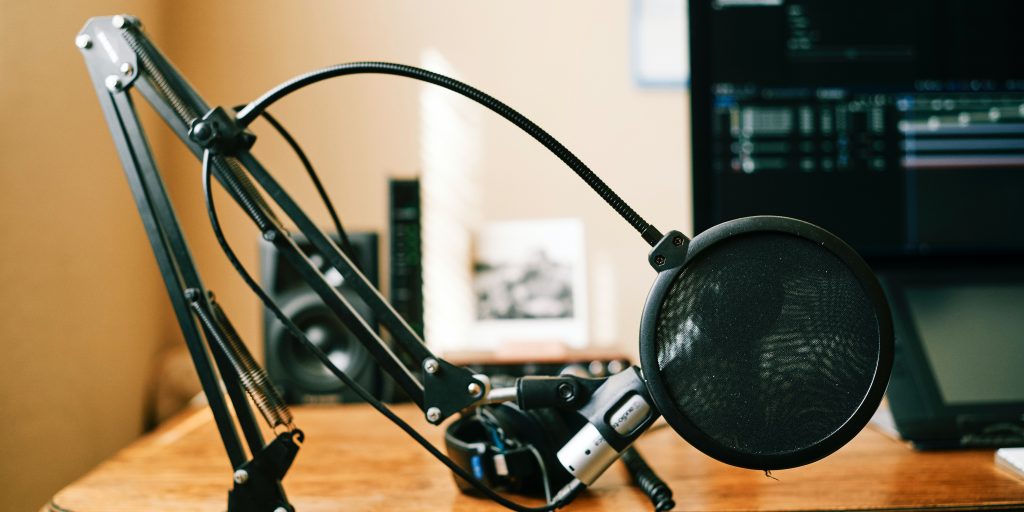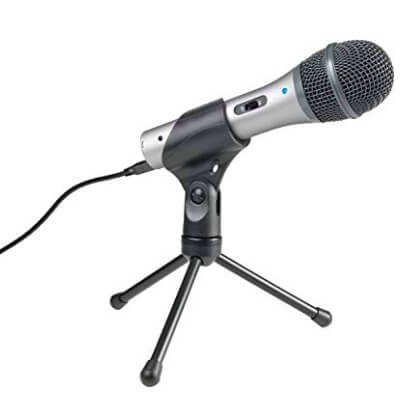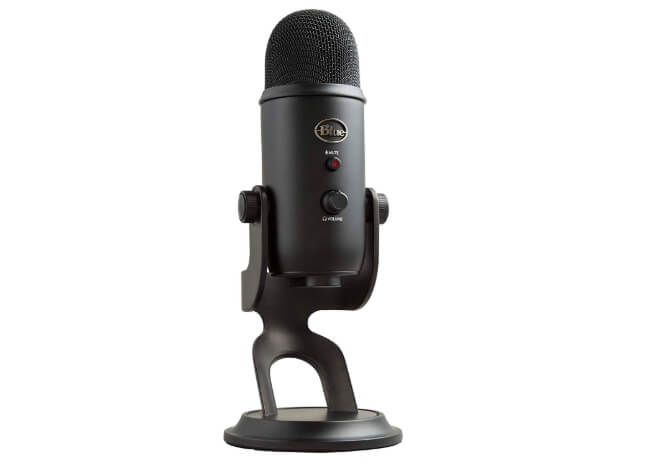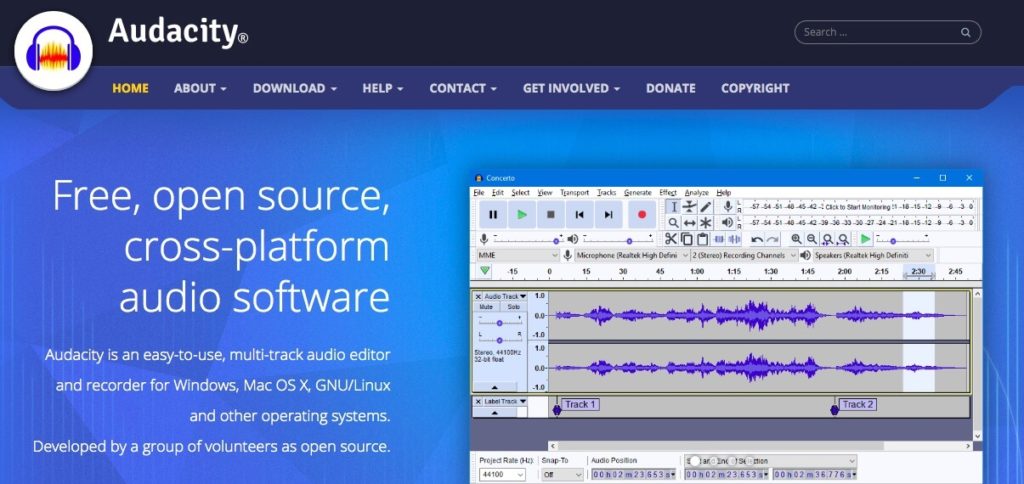How to Improve Your Podcast for 2021 By Choosing the Right Equipment

Now that podcasting has officially entered the mainstream, it could be something you’d like to get on board with. For example, you may have been hesitant to test the waters with podcasting in the past. On the other hand, you might have a dormant show you’d like to revive. Either way, you’ll want to take stock of your resources in order to create a quality podcast. If you already have a podcast, improving your setup, process and equipment can help a whole lot by saving time, improving quality and most importantly, help your listeners enjoy a better show.
Fortunately, there are lots of options for a wide range of budgets when it comes to gearing up for producing a podcast. No matter whether you’re selecting a custom podcast WordPress theme or finding the perfect microphone, we’re here to help guide you through the maze of podcast equipment choices.
In this article, we’ll cover our recommendations for podcasting hardware and software. We’ll also take a look at the best plugins and themes for your podcast website. Hit record and let’s get started!
Why the Right Equipment Matters for Your Podcast
Not only have podcasts grown in popularity but they have also proven to be a valuable marketing tool. This, combined with a relatively low barrier to entry, has made podcasting a competitive marketplace.
As such, selecting the right equipment can help set you apart from other podcasts in the same genre. Given the medium, audio quality is a first impression for how professional your podcast, which means having the best equipment your budget allows for is time and money well spent.
Equipment doesn’t come down to just a microphone or mixers. There’s a lot of audio-related devices that could help in the recordings. Furthermore, software tools for recording your podcast remotely, editing your show, promoting the podcast or for creating a podcast website are also highly important.
In the next section, we’ll go over three different categories of equipment and break them down for beginner, intermediate, and advanced podcasters. However, feel free to jump around and look at the areas that interest you the most!
Picking the Right Hardware: Microphones, Mixers, and Accessories
Of course, having a computer is a basic starting point for podcasting. We’re going to assume this is a given for you, and dive right into looking at microphones, mixers, and other accessories.
Beginner
To begin, let’s look at microphones as you don’t need to consider mixers and headphones so much at the very beginning; a simple set of earbuds will do, although you’ll want to pick up a better quality set of headphones, eventually.
First, the Audio-Technica ART2100 microphone is a solid first choice for beginning podcasters:

Due to the fact there are both USB and analog XLR connections it’s a very versatile choice. Similarly, the Samsung Q2U mic is set up with dual connections and is a slightly cheaper option.
If you’re looking for something extremely budget-friendly and highly portable, the Blue Snowflake USB mic comes in around $22. It is pocket-sized with a high-quality condenser and plug-n-play USB connectors.
It’s also worth nothing that these mics are great for solo podcasters, although you can of course record more voices with them if necessary.
Intermediate
You’ll want to begin looking at some accessories next. Boom arm stands (to help position your mic properly) and ‘pop’ filters (to stop plosive sounds from your mouth from hitting the mic) are must-haves. Podcasting kits that include a mic and accessories are a good option.
You may also want to check out a higher-quality mic like the Blue Yeti Blackout:

This is a nice progression for podcasters looking to improve their audio quality without breaking the bank, although we’d argue that a quality mixer or interface will be more helpful, in order to utilize the higher-quality XLR inputs for the mic.
Advanced
The secret of quality audio is to make sure there are no weak links in the chain. As such, you’ll constantly flip-flop between upgrading your mic and interface to keep up. A mic such as the Heil Sound PR 40 bundle is a solid potential step-up from your current equipment:

At this point the sky’s the limit when it comes to professional-quality microphones. We’d also suggest looking into whether you need to upgrade your mixer or interface. Focusrite are leaders in the field, and their line is stellar. Also, your headphones may also need an upgrade, although you’ll want to make sure they’re ‘closed-backed’ to ensure they don’t ‘spill’ into your mic.
Choosing Your Software: Editors, Websites, and Hosts
Audio editing software is the last piece of the production puzzle. Additionally, you’ll want to pick out a host for both your podcast and your website.
Beginner
Audacity is a free, cross-platform choice that thousands of people use with multitrack audio such as podcasts:

When it comes to creating a website for your podcast, WordPress is a standout option for all users. It’s free, and almost infinitely flexible and customizable in part by using a professional podcast theme. Additionally, WordPress is compatible with all major podcast hosts.
Intermediate
Hindenburg Journalist is a product geared specifically toward podcasting and audio storytelling. Pricing starts at $95 and includes a multitrack, cross-platform editing suite:

If you’re ready to move beyond a free podcast hosting option, we recommend hosts like Castos, Transistor, BuzzSprout, and the likes. These integrate easily with WordPress, and provide features that can help get your podcast out to more listeners. At this level, you can also work on enhancing your listener’s experience with the right themes and import tools for your website as well.
Advanced
At the advanced end of the software spectrum, you’ll find SOUND FORGE and Adobe Audition. They are the most well-known options for professional sound editing, regardless of whether that’s music, podcasts, and other audio projects.
You can also use email marketing to promote your podcast and send updates to your audience. Many podcasters do that by integrating a newsletter on their website, and send regular updates and content to their audience via email. You can learn how to easily start a newsletter, and later integrate it with your website.
How to Get Started With a New Podcast
There are a few basic tips we recommend for how to get started once your gear is in place. One thing you might want to spend some time on is defining your show niche. This can help keep your show on target and consistent for listeners. Setting a content schedule so listeners know when to expect a new episode is another best practice to keep in mind.
As we’ve mentioned in other articles, we recommend both a website and a podcast host for your show. With both of these in place, monetizing your podcast is easier to implement (among other aspects of promotion, marketing, and income-generation).
Our blog is full of quality articles outlining the steps you’ll need to tick off in order to get up and running, so we recommend checking it out!
Conclusion
Whether you’re new to podcasting or have dabbled in production previously, choosing the right gear for your show is important. Once you have the right gear for your level, you can easily get going.
You can easily resurrect an old podcast or kick-off 2020 with a new show using the right podcasting hardware and software. For example, USB mics are great as a quick entry point, and audio interfaces help to control the volume levels hitting your software. Speaking of which, free editing software could be all you need, although high-end editing software like Adobe Audition or SOUND FORGE is the gold standard.
No matter what level you start at, picking a podcast host and developing a podcast website is essential. Here at SecondLineThemes, we cater to the specific needs you’ll have as you develop your show’s website. Check out our dynamic podcast themes for WordPress, today!
